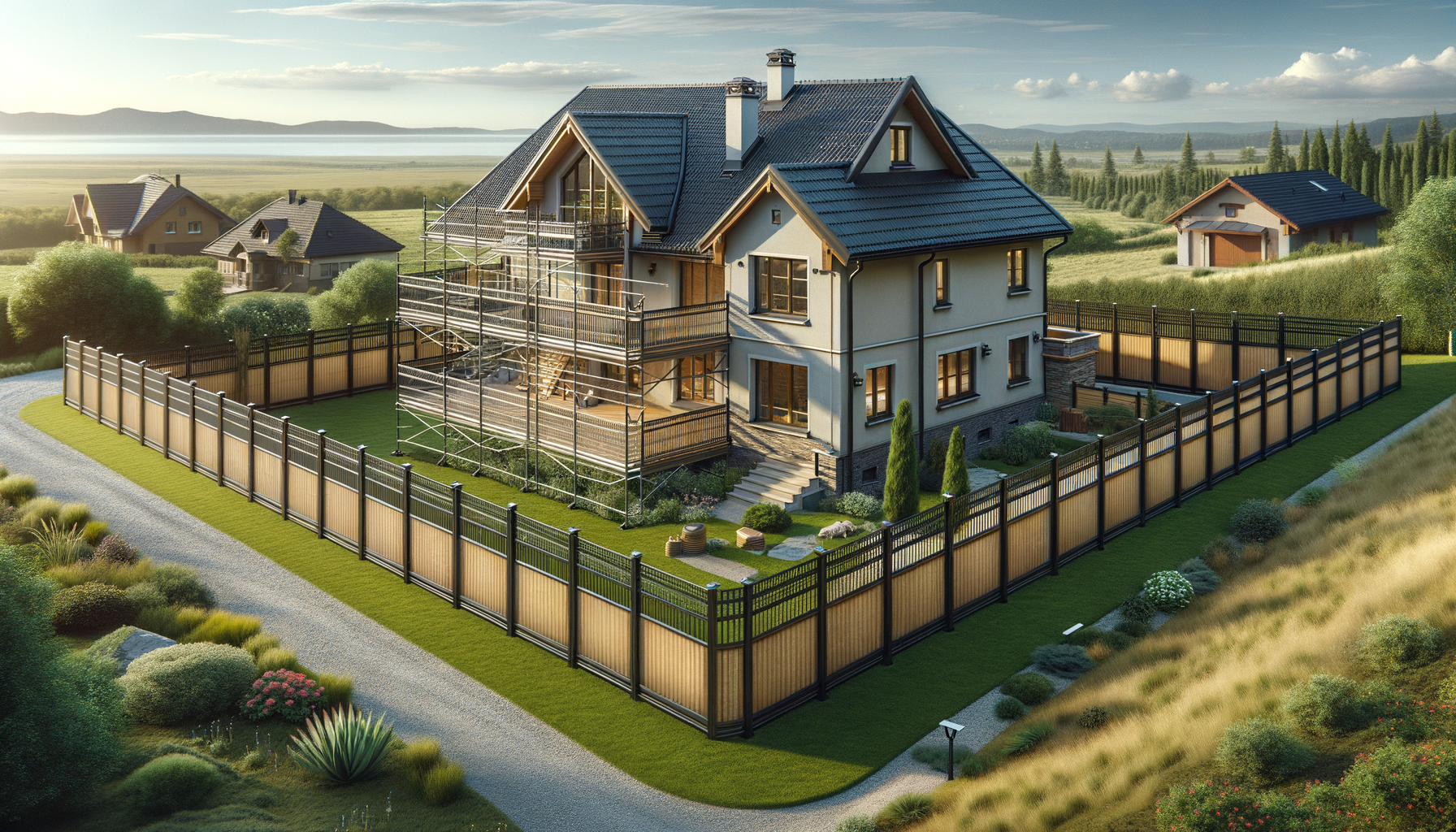Understanding the Importance of Home Fences
Home fences serve multiple purposes, making them a valuable addition to any property. Primarily, they offer privacy, allowing homeowners to enjoy their outdoor spaces without the prying eyes of neighbors or passersby. This sense of seclusion can significantly enhance the comfort and enjoyment of your home environment.
Security is another critical aspect of installing a fence. A robust and well-constructed fence acts as a deterrent to potential intruders, adding an extra layer of protection to your home. It can also safely contain children and pets, providing peace of mind to families.
Beyond privacy and security, fences contribute to the aesthetic appeal of your property. A well-designed fence complements your home’s architecture and landscaping, boosting curb appeal and potentially increasing property value. Whether you choose a classic wooden picket fence or a modern metal design, the right fence can transform your outdoor space.
Moreover, fences can help delineate property lines, reducing the likelihood of disputes with neighbors. Clearly defined boundaries are particularly beneficial in densely populated areas where space is at a premium.
Choosing the Right Material for Your Fence
When selecting a fence for your home, the choice of material is crucial. Each type of material offers distinct advantages and considerations, depending on your specific needs and preferences.
Wood is a popular choice due to its natural beauty and versatility. It can be painted or stained to match your home’s exterior and is relatively easy to install. However, wood requires regular maintenance to prevent rot and insect damage.
Vinyl fencing is a low-maintenance alternative to wood. It is resistant to rot, fading, and pests, making it a durable option. While the initial cost may be higher than wood, its longevity and minimal upkeep can make it a cost-effective choice in the long run.
Metal fences, such as aluminum or steel, offer exceptional durability and security. They are less prone to damage and can withstand harsh weather conditions. Metal fences can be more expensive, but their strength and longevity often justify the investment.
For those seeking an eco-friendly option, bamboo fences are a sustainable choice. Bamboo grows rapidly and is biodegradable, making it an environmentally conscious alternative. However, it may not provide the same level of security as other materials.
Key Factors to Consider Before Installation
Before embarking on a fence installation project, several factors need consideration to ensure the process goes smoothly and the result meets your expectations.
First, check local regulations and obtain any necessary permits. Many areas have specific rules regarding fence height, placement, and materials. Ensuring compliance with these regulations can prevent future legal issues.
Consider your budget carefully. While it might be tempting to cut costs, investing in quality materials and professional installation can save money in the long term by reducing maintenance and replacement expenses.
Think about the purpose of your fence. Are you primarily interested in privacy, security, or aesthetics? Understanding your primary goal will help guide your material and design choices.
Evaluate the landscape and soil conditions of your property. Certain materials and designs may be better suited to different terrains. For example, a stepped fence design might be necessary for sloped land.
Lastly, consider the maintenance requirements of your chosen fence material. Some materials, like wood, require regular upkeep, while others, like vinyl, are more maintenance-free.
The Installation Process: What to Expect
Understanding the installation process can help you prepare and ensure a successful project. Whether you choose to hire professionals or undertake a DIY project, knowing the steps involved is beneficial.
The first step is planning and measuring. Accurate measurements are crucial to ensure your fence fits the intended space and complies with local regulations. Marking the boundary lines with stakes and string can help visualize the fence layout.
Next, prepare the site by clearing any obstacles and leveling the ground if necessary. This preparation ensures a stable and even foundation for your fence.
Post installation is a critical phase. Posts are typically set in concrete to provide stability. The spacing and alignment of posts are vital for the structural integrity of the fence.
Once the posts are set, the panels or pickets can be attached. This step varies depending on the material and design of your fence. Ensure everything is level and secure to prevent future issues.
Finally, apply any finishes or treatments, such as paint, stain, or sealant, to enhance the appearance and durability of your fence.
Maintaining Your Fence for Longevity
Proper maintenance is essential to extend the life of your fence and keep it looking its best. Different materials require different care routines, but some general tips apply to most fences.
Regular cleaning is crucial. Dirt, mold, and mildew can accumulate, particularly on wood and vinyl fences. A simple wash with water and mild detergent can keep your fence clean and prevent damage.
Inspect your fence periodically for signs of wear or damage. Look for loose or broken parts, rot, rust, or insect infestation. Addressing these issues promptly can prevent them from worsening and extend the life of your fence.
For wooden fences, applying a sealant or stain every few years can protect against moisture and UV damage. This treatment helps maintain the wood’s appearance and structural integrity.
Metal fences may require rust prevention treatments, especially in humid or coastal areas. Regularly check for rust spots and treat them with rust-inhibiting paint or primer.
By investing time in regular maintenance, you can ensure your fence remains a valuable and attractive part of your home for years to come.








